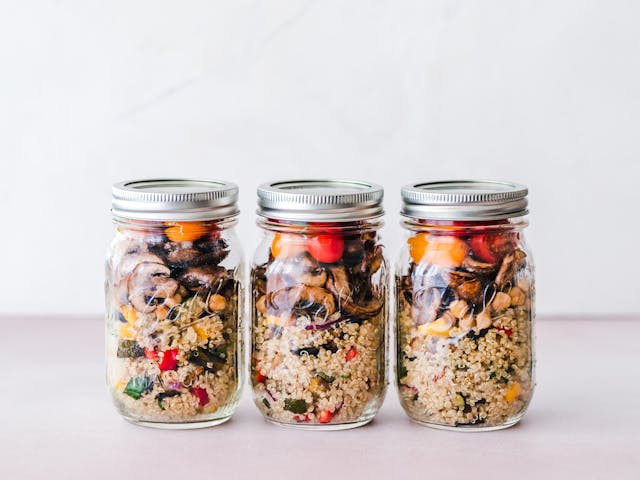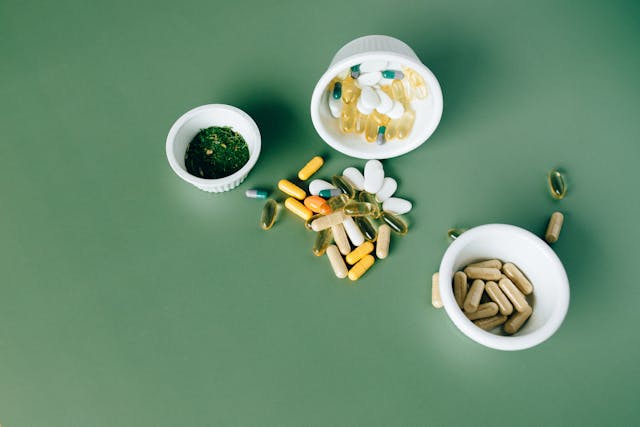Why Fiber is Essential for Your Health
Fiber is a crucial nutrient that supports digestion, regulates blood sugar, and promotes heart health. Yet, many people don’t consume enough of it. A fiber-rich diet can help prevent constipation, aid weight management, and lower cholesterol levels.
According to the USDA, most people only consume about 15 grams of fiber per day, which is far below the recommended intake. Consuming an adequate amount of fiber daily can help reduce the risk of chronic diseases such as heart disease, diabetes, and even certain types of cancer.
What Happens When You Eat More Fiber?
When you increase your fiber intake, your digestion improves, and your gut microbiome thrives. However, it’s important to increase fiber gradually to avoid bloating, gas, or discomfort. Drinking plenty of water also helps fiber do its job effectively by softening stools and promoting smoother digestion.
A fiber-rich diet can help:
- Improve bowel regularity and prevent constipation
- Lower cholesterol levels by binding with bile acids
- Stabilize blood sugar levels, reducing spikes and crashes
- Aid in weight loss by increasing satiety and reducing hunger cravings
Types of Fiber: Soluble vs. Insoluble
There are two types of dietary fiber: soluble and insoluble. Each plays a distinct role in digestive health.
- Soluble Fiber: Dissolves in water to form a gel-like substance. It helps lower blood cholesterol and blood sugar levels. Found in foods like oats, beans, lentils, apples, and carrots.
- Insoluble Fiber: Adds bulk to stools and helps food pass more quickly through the stomach and intestines. Found in foods like whole grains, nuts, seeds, and vegetables like cauliflower and green beans.
A well-balanced diet should include both types of fiber to optimize digestion and overall health.
Top 10 High-Fiber Foods
- Lentils – 15g per cup (cooked)
- Chia Seeds – 10g per ounce
- Black Beans – 15g per cup
- Avocados – 10g per fruit
- Whole Oats – 8g per cup
- Almonds – 4g per ounce
- Broccoli – 5g per cup
- Berries (Raspberries, Blackberries) – 8g per cup
- Brussels Sprouts – 6g per cup
- Sweet Potatoes – 4g per medium potato
High-Fiber Vegetables and Fruits
If you want to boost your fiber intake, adding more vegetables and fruits to your diet is a great place to start. Here are some of the best choices:
Vegetables:
- Artichokes – 10g per medium artichoke
- Carrots – 3.6g per cup
- Spinach – 4g per cup
- Peas – 9g per cup
- Cauliflower – 3g per cup
Fruits:
- Apples – 4.4g per medium apple
- Pears – 5.5g per medium pear
- Oranges – 3g per orange
- Bananas – 3.1g per medium banana
- Figs – 3.7g per 3 figs
How Much Fiber Should You Eat Per Day?
The recommended daily intake of fiber varies by age and gender:
- Men: Around 38g per day
- Women: Around 25g per day
- Teens: Between 25-30g per day
- Older Adults: Men (30g), Women (21g) due to lower calorie needs
To achieve these daily targets, incorporating whole foods such as whole grains, legumes, nuts, seeds, and fresh fruits and vegetables is essential.
High-Fiber Foods Chart for Constipation
If you’re struggling with constipation, increasing your fiber intake can be a natural and effective solution. Here is a high-fiber foods chart to help combat digestive issues:
| Food | Fiber Content (per serving) |
|---|---|
| Lentils | 15g per cup |
| Chia Seeds | 10g per ounce |
| Black Beans | 15g per cup |
| Avocado | 10g per fruit |
| Raspberries | 8g per cup |
| Whole Oats | 8g per cup |
| Flaxseeds | 8g per 2 tbsp |
| Pear | 5.5g per medium pear |
| Brussels Sprouts | 6g per cup |
| Prunes | 3.4g per 5 prunes |
Fiber Supplements – Are They Necessary?
While whole foods are the best source of fiber, some individuals may struggle to meet their daily requirements. In such cases, fiber supplements like psyllium husk, inulin, or methylcellulose can help fill the gap.
However, fiber supplements should not replace fiber-rich foods, as they lack other essential nutrients found in whole foods, such as vitamins, minerals, and antioxidants.
High-Fiber Foods for Different Age Groups
- For Adults: Whole grains, beans, nuts, and fiber-rich fruits should be a staple.
- For Men: Focus on high-protein, high-fiber foods like lentils and quinoa for muscle health.
- For Women: Include flaxseeds, berries, and leafy greens for optimal digestive and heart health.
- For Teens: Encourage whole grains, fruits, and vegetables over processed snacks to support growth and development.
Tips for Increasing Fiber Intake
- Start Slow: Increase fiber gradually to avoid bloating and digestive discomfort.
- Stay Hydrated: Drink plenty of water to help fiber move smoothly through the digestive system.
- Eat Whole Foods: Choose whole grains over refined grains.
- Snack Smart: Opt for nuts, seeds, and fresh fruit instead of processed snacks.
- Diversify Your Diet: Eat a variety of fiber-rich foods to get both soluble and insoluble fiber.
Conclusion
Eating more fiber is one of the simplest ways to improve digestion, support heart health, regulate blood sugar, and maintain a healthy weight. By incorporating high-fiber foods into your daily meals and following best practices for gradual fiber intake, you can enjoy long-term health benefits.
If you’re looking to increase your fiber intake, start with whole, unprocessed foods and stay consistent. Over time, your gut health, digestion, and overall well-being will improve.
By making small changes today, you can reap lifelong benefits. What’s your favorite high-fiber food? Let us know in the comments!


